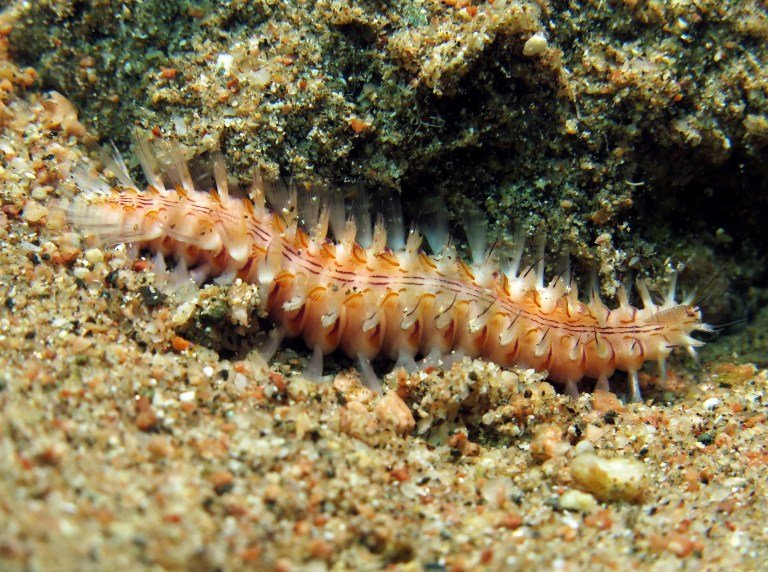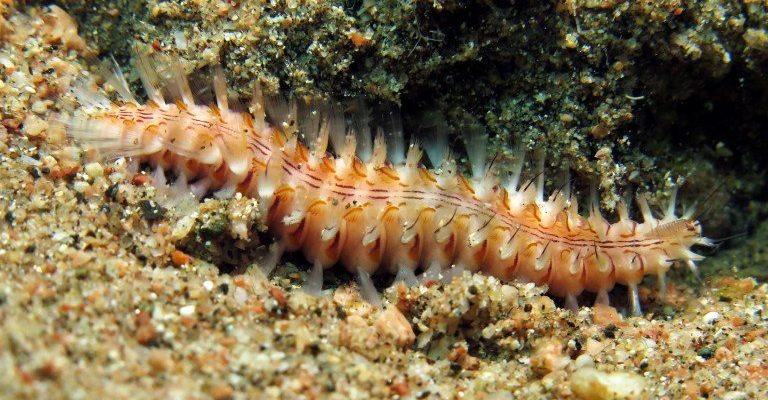
So, let’s break it down. Bristle worms are tiny marine worms that belong to the polychaete family. They usually pop up as uninvited guests in your aquarium, often coming in with live rock or coral. If you’re worried about them posing a threat to your precious corals and live rock, you’re not alone. Let’s dig deeper (pun intended!) to see what these creatures are really about and how they interact with their environment.
What Are Bristle Worms?
Bristle worms are found in both marine and freshwater environments, but in this context, we’re mainly focusing on marine species. They are long, segmented worms that can vary in color—typically reddish to brown. These guys have tiny bristles, or setae, that give them their name. Some bristle worms can grow quite long, with some species reaching up to a foot!
These worms are pretty important for the ecosystem in your aquarium. They help break down organic matter, making them useful for cleaning up leftovers that fish and corals might leave behind. However, their presence in your tank can feel like a mixed blessing. Think of bristle worms as the janitors of your aquarium—they have a job to do, but their methods might not always be what you’d hoped for.
You might start seeing them after adding live rock or coral to your tank. They hitch a ride, pop out from the rock, and start making themselves at home. But don’t panic! Their appearance doesn’t automatically mean your aquarium is in trouble.
Do Bristle Worms Damage Live Rock?
When it comes to live rock, bristle worms are generally not a threat. Live rock is a crucial element in marine aquariums, both for filtration and as a habitat for various marine life. Bristle worms tend to feed on dead organic material rather than the rock itself.
Here’s the thing: if your live rock is healthy and thriving, bristle worms will actually benefit it by promoting the breakdown of materials. This process can enhance the rock’s biological filtration. The tiny organisms and bacteria that live in the rock are usually resilient enough to handle occasional bristle worm activity. So unless your live rock is already struggling due to other issues—like poor water quality—bristle worms are more likely to be allies than enemies.
However, if you see an overwhelming number of bristle worms starting to take over your rock, this could indicate an underlying problem—like overfeeding. This surplus of food can lead to a larger population of worms. It’s wise to keep an eye on their numbers to make sure you’re not setting off a chain reaction of issues.
Can Bristle Worms Harm Corals?
This is where it starts to get a bit contentious. Many hobbyists worry that bristle worms might munch on their precious corals. In most cases, bristle worms won’t directly harm healthy corals. They prefer to scavenge on detritus and decaying matter rather than live corals. However, they can become a problem in certain scenarios.
If a coral is already weak or dying, a bristle worm might take advantage of the situation. Imagine an injured animal in the wild; scavengers will usually show up for an easy meal. If your corals are stressed due to poor water conditions, lack of light, or other factors, they may become more vulnerable to being nibbled on by bristle worms.
It’s important to remember that healthy corals usually have good defenses against these worms. Keeping your aquarium’s water parameters in check, ensuring proper lighting, and managing feeding can keep your corals robust and less appealing to scavengers.
How to Manage Bristle Worm Populations
If you find bristle worms in your tank and are concerned, there are steps you can take to manage their population without resorting to drastic measures. Here are some tips:
- Monitor Feeding: Overfeeding can lead to excessive waste, which attracts bristle worms. Feed only as much as your fish can consume in a few minutes.
- Manual Removal: If you notice a few bristle worms getting a bit too cozy, grab a pair of tweezers and remove them. It’s a straightforward method, but be cautious—those bristles can sting!
- Encourage Predators: Certain fish, like wrasses, love to snack on bristle worms. Adding compatible species to your tank can naturally help control their numbers.
- Maintain Water Quality: Regular water changes and monitoring parameters like ammonia, nitrites, and nitrates can keep your corals healthy and deter excessive worm growth.
Keeping an eye on your tank’s overall health is the best way to keep bristle worms in check. They can turn into a problem if left unchecked, but with some proactive management, you’ll find they can coexist peacefully with your corals.
Identifying the Threat Level
It might become overwhelming if all you can think about is whether bristle worms are harmful. Here’s how to assess their threat level in your aquarium:
1. Assess the Population: A few bristle worms are normal, even beneficial. If you start seeing excessive numbers, it’s time to act.
2. Check Coral Health: Healthy corals with bright colors and firm structures are less likely to be affected. If your corals show signs of stress or decay, it may not be solely due to bristle worms.
3. Water Parameters: Regularly test your water for any imbalances. High ammonia or nitrite levels could stress your corals and make them more vulnerable.
4. Observe Behavior: If you catch bristle worms actively feeding on corals, it’s time to reevaluate your tank’s health and consider management solutions.
The reality is that bristle worms are part of the aquatic ecosystem, and with a little care, they don’t have to be your enemy.
So, can bristle worms damage live rock or corals? The short answer is: not usually. They can be more helpful than harmful if your tank is in good shape. It’s all about balance—keeping your corals healthy and your bristle worms in check will lead to a thriving aquarium.
Remember, it’s perfectly normal to have concerns as a hobbyist. Keeping a thriving tank is a learning experience, and understanding the role of each creature, including bristle worms, makes you better equipped to care for your underwater world. So, next time you spot a bristle worm, think twice before panicking. They might just be doing their part in your little ocean!

